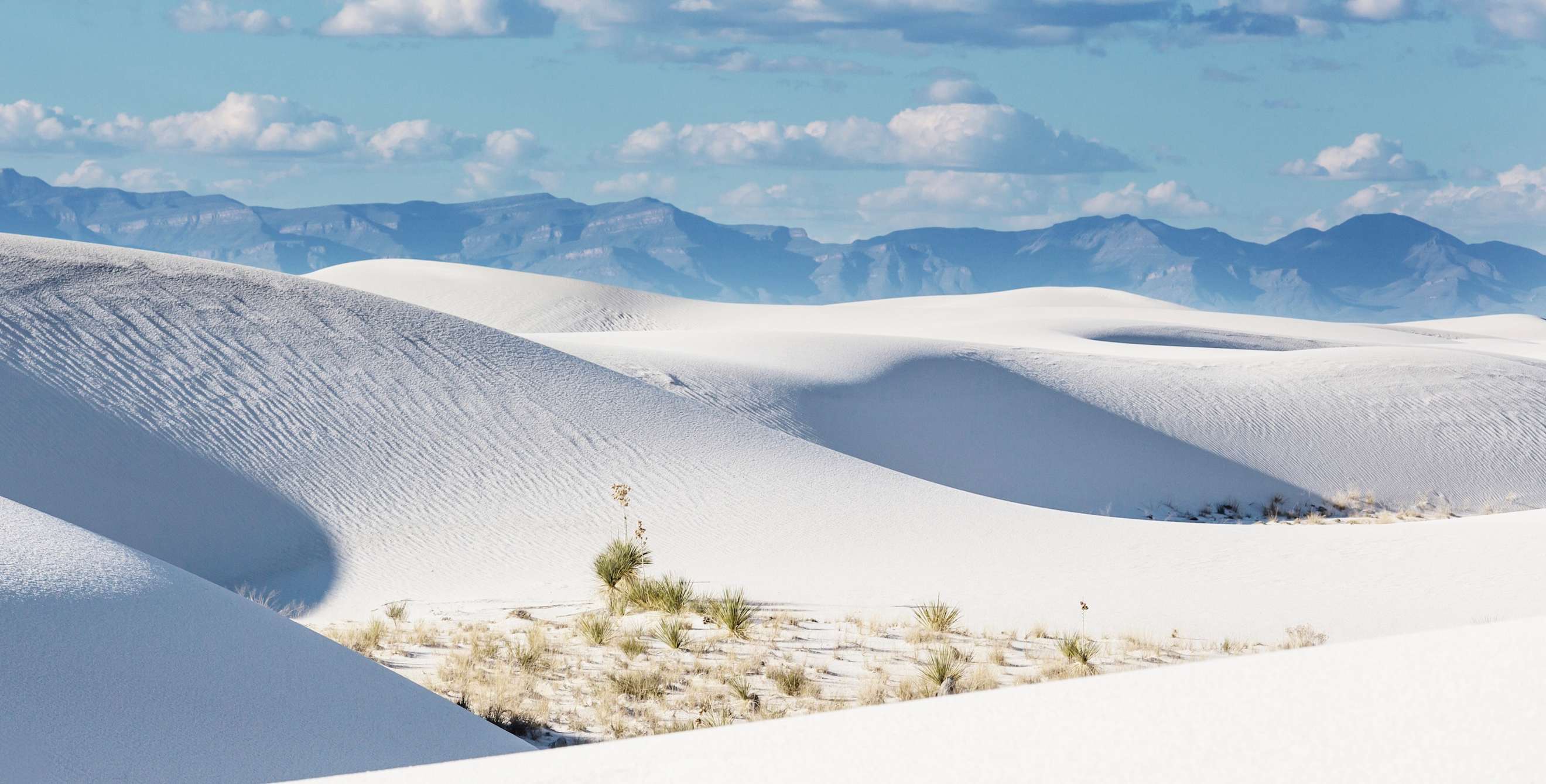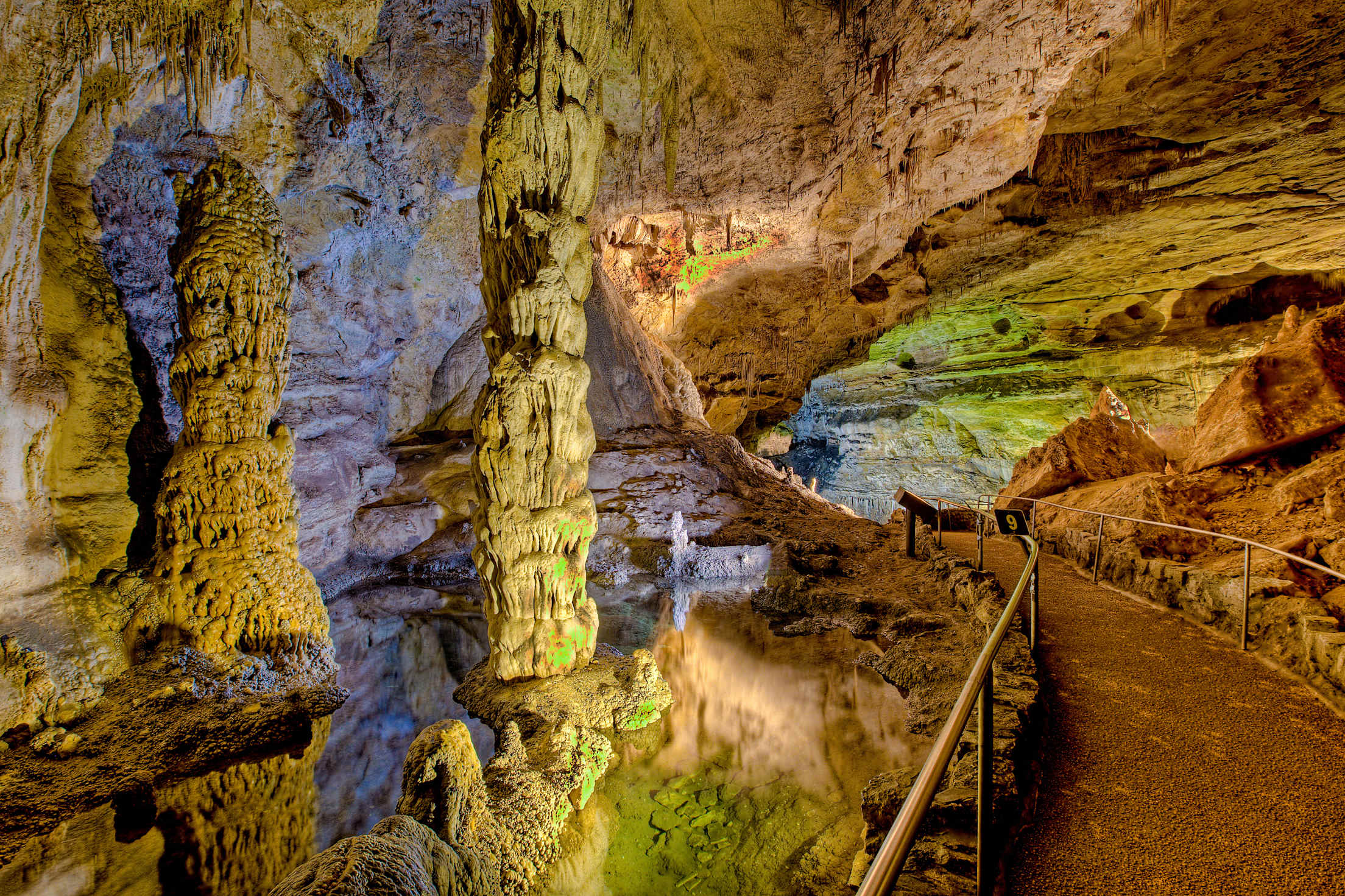
5 Weird Places to Visit in Southern New Mexico
With its sand dunes and UFO museum, southern New Mexico is an extraordinary experience.

Most visitors to southern New Mexico know of its reputation for strangeness. They don't call it the Land of Enchantment for nothing. Where else can you find a spaceport, UFO museum, bat caves, moon-like dunes, and a hot-springs town named after a TV game show? Those odd places were all on my itinerary. What I didn't expect was to be so taken in by their magnetic appeal.
Why embrace strangeness? Strange places are intriguing, mind-boggling, and never dull. I'll take bizarre over boring, mystery over history, quirky over quiescent, and mystifying over mundane every time. If you're of the same mindset, southern New Mexico is just across the border, two hours east on I-10 from Tucson. So come along for the ride.
Steamy: Spa Town
The strangeness starts with the name: Truth or Consequences, or as the locals call it, "T or C." But before townsfolk accepted Truth or Consequences game-show host Ralph Edwards' rename-your-town dare in 1950, it was Hot Springs, New Mexico. The motels that sprung up in the early 20th century, like the geothermal "healing waters" that fill their pools and tubs from the water table beneath, have been updated and still draw mineral-springs enthusiasts.
These inns are clustered in a five-by-five-block Historic District just above the Rio Grande, with most offering soaks in pools and private tubs for day use (charged by the hour), which are free to overnight guests who also enjoy in-room hot-spring spa tubs or bathtubs. Each inn exudes its own character. The romantic Riverbend Hot Springs' public pools and private tubs overlook the river. Sierra Grande Lodge and Spa is a Ted Turner–owned luxury inn with a holistic spa and candlelit tubs. Blackstone Hot Springs offers spacious, TV-show-themed rooms, and The Wet Room is a private room with a tub and sauna waterfalls that can be reserved. Finally, the Charles Motel and Hot Springs offers no-nonsense indoor and rooftop private tubs for $6–$10 per hour. The 100-plus-degree waters are mineral-rich, clear, and odorless—a stress-reducing treat even if you don't believe in their healing properties.
Surreal: Dunes Forever
White Sands National Monument might as well be on the moon; it's just as white and ethereal, and nearly as barren. But it's only two hours southeast of Truth or Consequences, so no spaceship is required to reach the world's largest gypsum dune field.
From space, White Sands National Monument's 275 square miles of powdery sand must look like a sparkling spoonful of sugar. Blinding white at midday, the rolling, shifting dunes that rise up to 60 feet in height take on shades of pink, orange, blue, and purple at dusk, making late afternoon the best time for picture taking and the daily, ranger-led sunset strolls. Arrive earlier (and carry water) if your kids want to sled the snow-like dunes on disks (sold at the museum store) or to take on the longest hiking trail—the 4.7-mile Alkali Flat loop, marked by tall orange poles.
The visitor center/museum screens an excellent orientation film, and park admission lets you drive the sand-covered, 8-mile road deep into the dunes, with frequent pullouts for picnics, sand play, dune walks, and vista points.
Spacey: Beam Me Up, Scotty
A 45-minute drive from Truth or Consequences brings you to a place where the truth of commercial space travel is pursued with passion. That place is Spaceport America, accessible only on pre-arranged tour-bus rides.
Year-round, half-day, "theater-shuttle" tours on Saturdays and Sundays start at the Spaceport America Visitor Center and journey to the world's most ambitious commercial spaceport where Virgin Galactic's Sir Richard Branson, Space X's Elon Musk, and other billionaires have bet on passenger space travel. During the tour, you're shown around all parts of the spaceport where the public is allowed: the dome-shaped Spaceport Operations Center, the Virgin Galactic building, and the spaceway (a 1.9-mile-long runway). You'll get a chance to ride the G-Shock simulator, which mimics the rapid acceleration of a liftoff. You'll learn all about the spaceport, too: how it evolved, the work being done today, future plans, and all the dirt on celebrities who have ponied up $250,000 apiece to spend 10 minutes in space.
Strange: City of Aliens
In a farmer's field on the road to Roswell is a life-size diorama of a little green man alongside his spaceship, greeting a startled family. It's the first sign of the phenomena that has put Roswell on the map, with a UFO Museum that draws more visitors than any museum in New Mexico. It occupies an entire city block in the heart of downtown Roswell.
The museum is equal parts serious and self-mocking. The scholarly approach is evident in the name—The International UFO Museum and Research Center; the lecture hall; the two-room library of 7,000 books and 35,000 periodicals; and the hundreds of framed photos and news clippings that build the case for alien-piloted spaceship visits worldwide and especially the 1947 "flying disk" crash near Roswell, when dead aliens were allegedly moved to another location. But the museum also has fun with the subject by displaying alien movie posters and mock-up scenes of aliens beside their spaceships—a favorite background for selfies. You'll also spot UFO souvenir gift shops and "Aliens Welcome" signs all over town.

Chilling: Into the Bat Cave
Unless aliens abduct you during the two-hour drive from Roswell to Carlsbad Caverns National Park, you'll arrive to explore yet another world deep inside the earth, after a 750-foot elevator ride straight down from the visitor center or a 1.25-mile walk downhill from the Natural Entrance cave opening nearby. You have two options to see the caverns: the Big Room self-guided loop or reservation-only ranger-guided tours.
The self-guided walk is on paved, double-railed, adequately lit paths through a procession of magical stalactites, stalagmites, columns, "draperies," and other limestone and calcite "decorations." Some soar dozens of feet from the floor or ceiling of the hundreds-feet-high cave. While the caverns' unearthly beauty defies description, the great cathedrals of Europe come to mind, especially in the Big Room.
Intrepid visitors can take guided tours that involve steep trails or belly crawling with lanterns or headlamps.
Each evening from May to October, the caverns' thousands of bats simultaneously flock out of the Natural Entrance—a sight so spellbinding there's an amphitheater for watching the mass exodus.